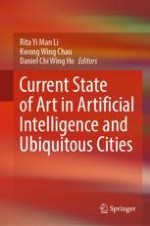2022 | OriginalPaper | Chapter
4. The Impact of Artificial Intelligence Educational Robots in the Field of Education: a PRISMA Review
Authors : Xuanzhang Mou, Rita Yi Man Li
Published in: Current State of Art in Artificial Intelligence and Ubiquitous Cities
Publisher: Springer Nature Singapore
Activate our intelligent search to find suitable subject content or patents.
Select sections of text to find matching patents with Artificial Intelligence. powered by
Select sections of text to find additional relevant content using AI-assisted search. powered by
